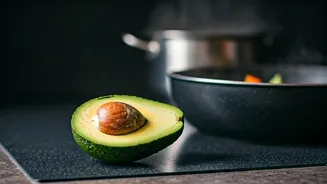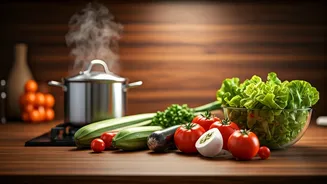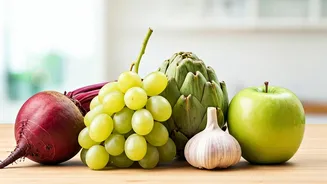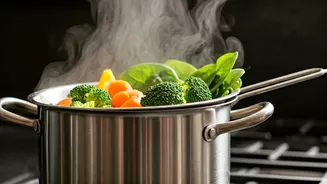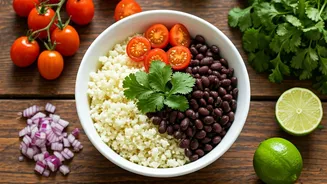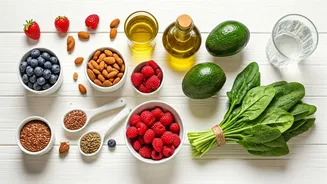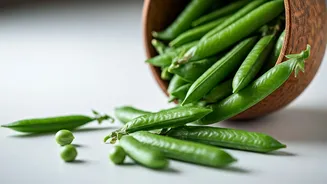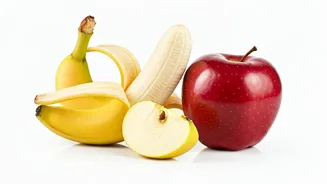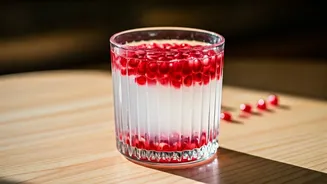Overcooking Vegetables
One of the most frequent errors is overcooking vegetables. When vegetables are exposed to excessive heat, whether through boiling, steaming, or sautéing
for too long, they lose a significant amount of their water-soluble vitamins, such as vitamin C and B vitamins. These nutrients are highly susceptible to heat and leach out into the cooking water or break down when exposed to high temperatures for extended periods. To prevent this, cook vegetables until they are just tender-crisp. Steaming, stir-frying, or lightly sautéing vegetables are better alternatives, as they preserve nutrients more effectively. Quick cooking methods minimize the duration of heat exposure, ensuring that the vegetables retain their vibrant color, texture, and nutritional value. For instance, lightly blanching green beans and then quickly cooling them in ice water can preserve their vitamins and minerals while maintaining their crispness.
Using the Wrong Oils
Choosing the wrong cooking oils can also diminish food's nutritional value. Some oils have low smoke points, meaning they break down and release harmful compounds when heated to high temperatures. This not only affects the taste of the food but also destroys beneficial nutrients. For example, using olive oil at high heat can degrade its healthy monounsaturated fats. Opt for oils with higher smoke points, like avocado oil, refined coconut oil, or sunflower oil, when frying or searing at high temperatures. These oils are more stable and less likely to break down. Furthermore, certain oils are best reserved for finishing dishes rather than cooking. Extra virgin olive oil, for example, is excellent for drizzling over salads or cooked dishes, preserving its flavor and nutritional properties. Always check the smoke point of an oil before using it to ensure you're cooking safely and maintaining the nutrient content of your food.
Improper Food Storage
The way you store your food can significantly impact its nutrient content. Incorrect storage can lead to the loss of vitamins and minerals over time. For instance, storing fruits and vegetables at room temperature for extended periods can accelerate the degradation of nutrients, especially vitamin C. To preserve nutrients, refrigerate produce as soon as possible. Some items, like leafy greens, benefit from being stored in airtight containers to maintain moisture and prevent wilting. Others, like potatoes, should be kept in a cool, dark place to slow down the conversion of starch into sugar and to prevent sprouting, which can reduce their nutritional value. Additionally, avoid storing food in direct sunlight, which can degrade vitamins. Proper food storage practices extend shelf life and ensure that food retains its maximum nutrient profile until you’re ready to cook it.
Washing Before Storing
Washing fruits and vegetables before storing them is a common mistake that can actually speed up nutrient loss. Washing can introduce moisture, which encourages spoilage and bacterial growth, leading to a breakdown of vitamins and minerals. Instead, wash produce just before you use it. This prevents unnecessary exposure to moisture and maintains the integrity of the food. When washing, use cool water and gently scrub the surfaces of fruits and vegetables to remove dirt and any residues. Avoid using harsh soaps or detergents, which can leave a residue on the produce. For items like berries and delicate greens, washing them just before eating helps preserve their nutrients and prevents them from becoming soggy or losing their freshness. This simple practice ensures you get the most nutritional value from your fresh produce.
Microwaving Incorrectly
While microwaving can be a convenient cooking method, using it improperly can diminish the nutrient content of your food. Overheating or using too much water can lead to a loss of vitamins, particularly water-soluble ones. Microwaving vegetables with a minimal amount of water, or even without any, is often the best approach. The goal is to cook the food quickly and with the least amount of moisture necessary to preserve nutrients. Another benefit of the microwave is its quick cooking time which also leads to preservation of nutrients. Covering food with a lid or plastic wrap can also help retain moisture and nutrients. When microwaving, it is essential to monitor cooking times closely to prevent overcooking, ensuring that you’re retaining as much nutritional value as possible from your meals.
Peeling Fruits Incorrectly
Peeling fruits and vegetables can be a major source of nutrient loss, as many nutrients are concentrated in or just beneath the skin. The skins of fruits like apples, potatoes, and cucumbers are rich in fiber, vitamins, and antioxidants. Peeling them removes these essential nutrients. Whenever possible, consume fruits and vegetables with their skins intact. This enhances your intake of vital nutrients. If peeling is necessary for safety or palatability, try to peel as thinly as possible. This minimizes the amount of nutrient-rich skin that is discarded. Thoroughly wash the produce before eating to remove any potential contaminants. This approach allows you to enjoy the full nutritional benefits while ensuring food safety. Leaving the skin on is an easy way to boost the nutritional value of your meals.
Using Metal Utensils
Using metal utensils, particularly when cooking acidic foods, can leach minerals from the food and degrade its nutritional content. For instance, cooking tomatoes in a metal pot can cause the acid in the tomatoes to react with the metal, leading to a metallic taste and potentially reducing the levels of certain vitamins. The utensils themselves can leach metals into food. Non-reactive cookware, such as glass, ceramic, or stainless steel, is recommended for cooking acidic foods. These materials do not react with the food, preserving both its flavor and nutrient profile. Wooden or silicone utensils are better choices for stirring and serving, as they are non-reactive and gentle on your cookware. Choosing the right utensils and cookware ensures that your meals retain their maximum nutritional value and the best taste.
